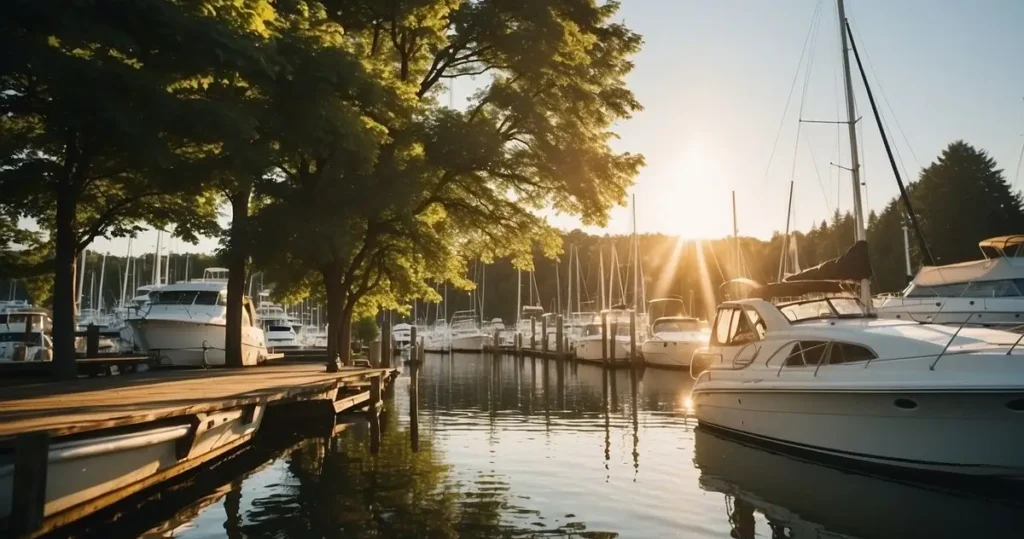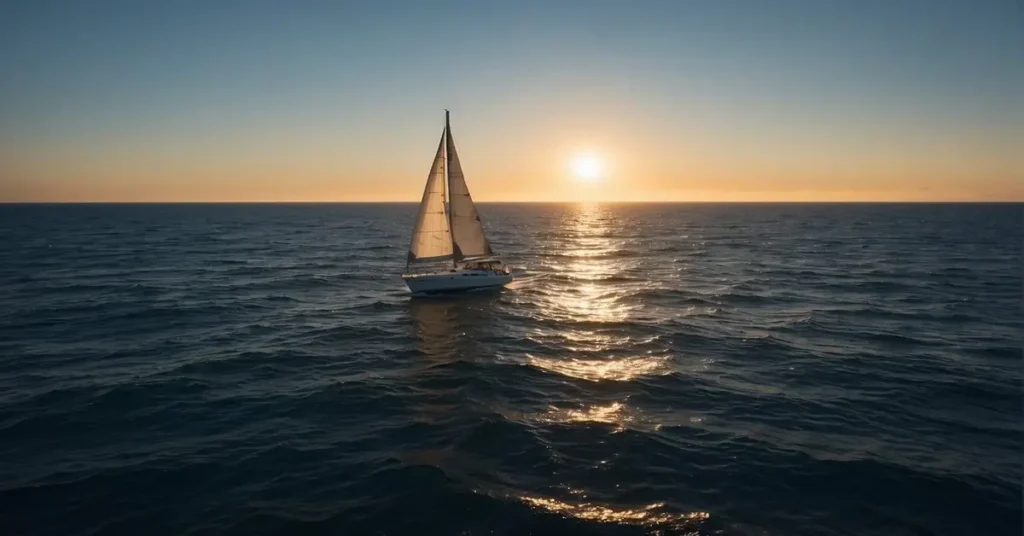Embark on a nautical journey where the unexpected becomes a test of skill; welcome to the world of a Knockdown in Sailing. It’s the moment when the sea challenges you, tipping your mast to kiss the water’s edge, and your resolve shines as you navigate through the storm.
Set sail with us as we delve into mastering these thrilling encounters, transforming each knockdown into a triumphant notch on your captain’s belt.
How to Survive a Knockdown in Sailing
I know firsthand that experiencing a knockdown in sailing can be a harrowing event. It’s when a sudden force, like a strong gust of wind or a giant wave, tips your boat to an extreme angle or even temporarily lays it flat on its side. The key is to stay calm and take immediate action. Here’s a concise guide to help you weather the situation:
- Stay attached: Always wear a safety harness connected to the boat.
- Know your position: Know where everyone is; count heads frequently.
- Close off the cabin: Prevent flooding by securing the companionway and hatches.
- Release the sheets: Easing the sails can help the boat right itself.
- Activate the VHF radio: If needed, issue a distress call or keep communication open with your crew.
- Stay low: Keep your center of gravity low to avoid being thrown overboard.
If your boat doesn’t right itself immediately:
- Check that your keel and rudder are intact.
- Bail out water if the cockpit or cabin is flooded.
- Assess for any damage to the rigging and sails.
- Once stabilized, resume your course with caution.
Remember, preparation is crucial. Before setting sail, understand your boat’s limits and practice recovery drills. Stay informed on how to recover quickly from a knockdown to boost your confidence and safety on the water.
Understanding a Knockdown in Sailing

Experiencing a knockdown in sailing can be an unsettling event. In this situation, the boat is considerably tilted, possibly causing the mast to approach or meet the water.
The Phenomenon of Knockdown
A knockdown occurs when my boat is pushed severely to one side, often by a powerful gust of wind or a giant wave, tipping it over to such an extent that the mast may come perilously close to, or even touch, the water’s surface. This is different from capsizing, where the boat tips over wholly.
In a knockdown, the sailboat is usually pushed to around 90 degrees, but due to the righting momentum of the keel, it often begins to recover by itself.
Factors Contributing to Knockdowns
Several factors can contribute to a knockdown. Foremost among these are wind and waves. Sudden strong gusts, or storms, can overwhelm my sailboat if I’m unprepared. The sail area exposed to the wind greatly influences this; a larger area can catch more wind and thus increase the likelihood of a knockdown. Similarly, adverse weather conditions and storms can generate waves capable of tilting the boat drastically.
Boat speed, rudder control, weight distribution on board, and the condition of the sails and mast also play critical roles.
Preventing and Preparing for Knockdowns
To reduce the risk of a knockdown:
- Monitor the weather forecast carefully and avoid sailing in conditions likely to produce squalls or storms.
- Reef the sails to decrease sail area when strong winds are anticipated.
- Ensure that I and my crew wear life jackets and harnesses for safety.
- Train for quick and effective preparation and recovery procedures.
In addition, regular drills aimed at improving my crew’s response and keeping essential safety gear accessible at all times will enhance my ability to manage a knockdown scenario. Understanding and respecting the power of nature, alongside thorough preparation, are vital to ensuring crew safety and enjoying the challenges of sailing.
Recovery and Safety Measures

During a knockdown in sailing, quick actions and the proper safety equipment can distinguish between a brief scare and a life-threatening situation.
Recovering From Knockdowns
When I’m sailing, and a knockdown occurs, I immediately focus on regaining control of the sailboat. It’s crucial to release the sheets to de-power the sails and move the helm towards the wind to right the boat. Should the boat become dismasted, creating a jury rig or using a storm jib may become necessary to make headway. If a rogue wave is the cause, I stay clear of the deck to avoid being swept overboard.
Safety Equipment for Knockdowns
Before setting sail, it’s essential to have safety gear prepared for adverse weather conditions. Life jackets for everyone on board are essential, and I always confirm they’re easily accessible. I checked that the hull integrity was sound and that the bilge pump was functioning. For extreme situations, I ensure there’s a sea anchor and a Jordan series drogue on board.
Of course, emergency equipment like flares and a VHF radio to issue a mayday call can be lifesaving. I also practice essential skills with a sailing instructor to prepare for emergencies.
FAQ – Knockdown in Sailing

When it comes to a knockdown in sailing, sailors must understand what it is, how to recover, and whether a capsized boat can right itself.
What happens when a sailboat is knocked down?
A knockdown occurs when my sailboat is heeled over sharply by strong winds or waves, causing the mast to come close to or even touch the water. This extreme tilt challenges both my vessel’s stability and my ability to manage it effectively. It’s less severe than a full capsize, but the risk of damage and danger is significant.
Can a sailboat recover from a knockdown?
Yes, a sailboat can recover from a knockdown, often automatically due to the boat’s design. The weighted keel provides the necessary righting moment to bring the boat back upright, although my quick and correct response as a skipper is crucial to aid this process.
Can a capsized sailboat right itself?
Whether a capsized sailboat can right itself depends on its design. Keelboats have a weighted keel that often allows them to return to an upright position after a capsize. However, smaller vessels, such as dinghies, typically require manual intervention to right them.
Have you weathered a ‘Knockdown in Sailing’ or have a tip to share? Drop anchor in the comments below and join the conversation with fellow sea enthusiasts!



